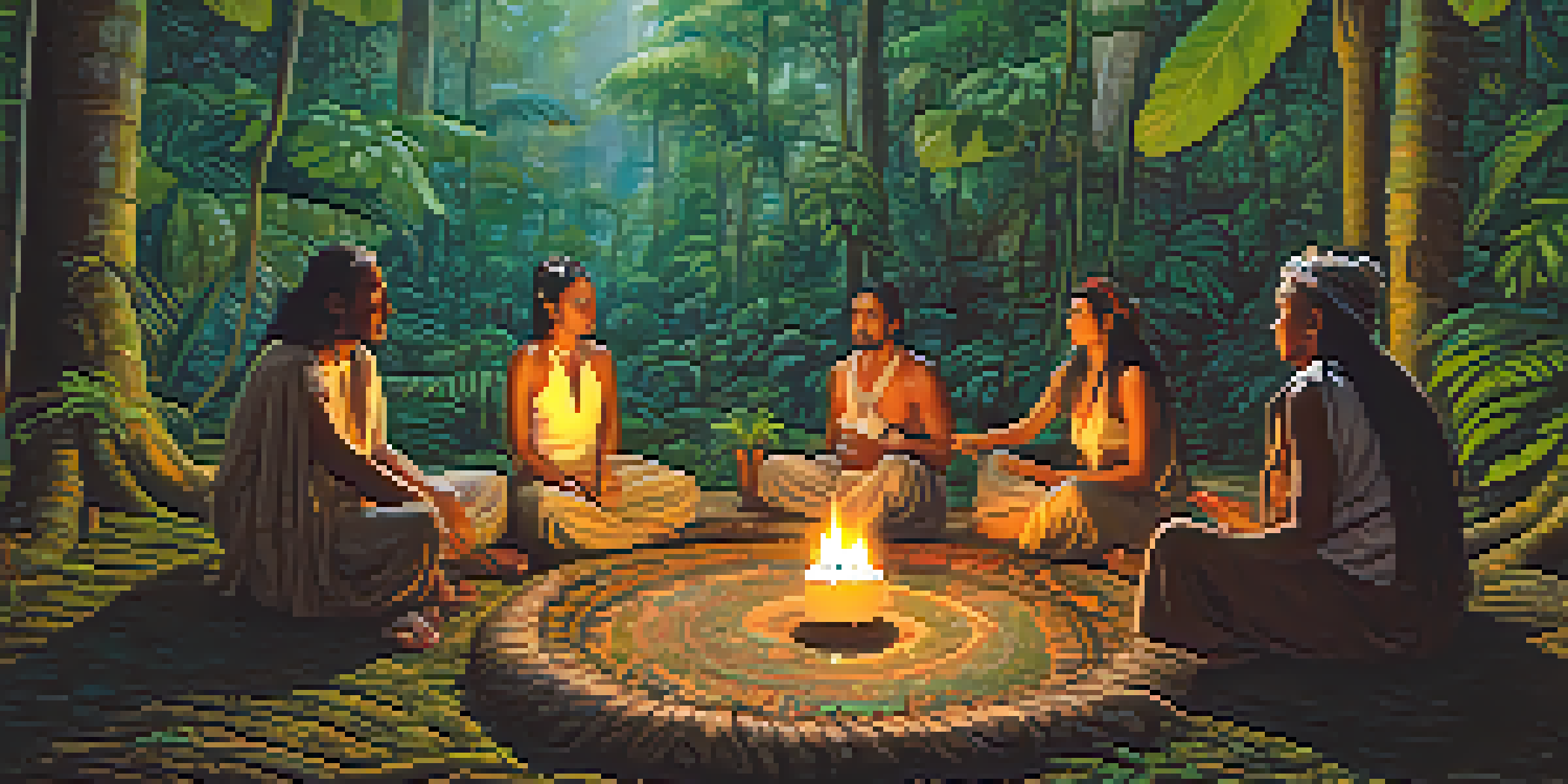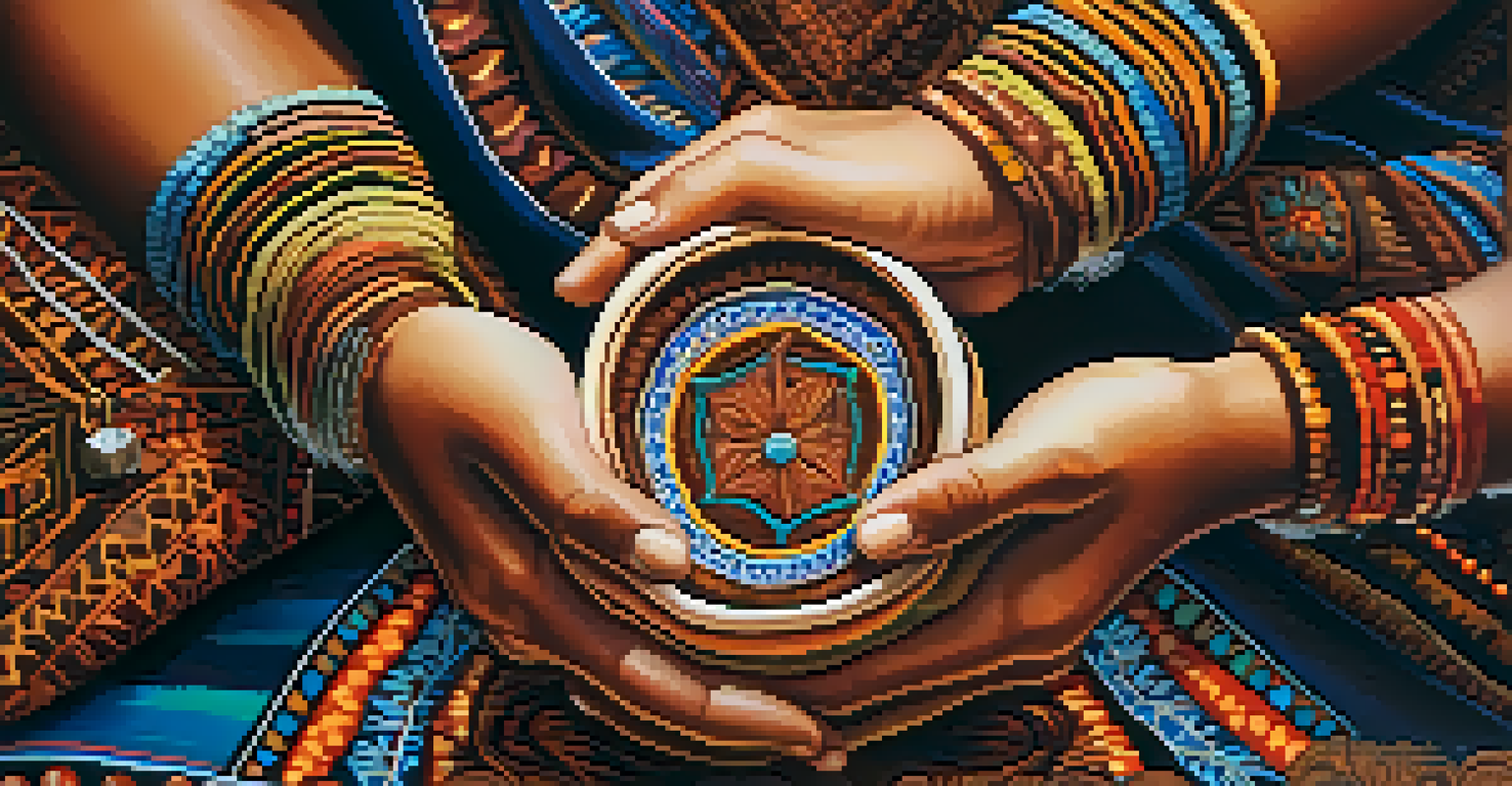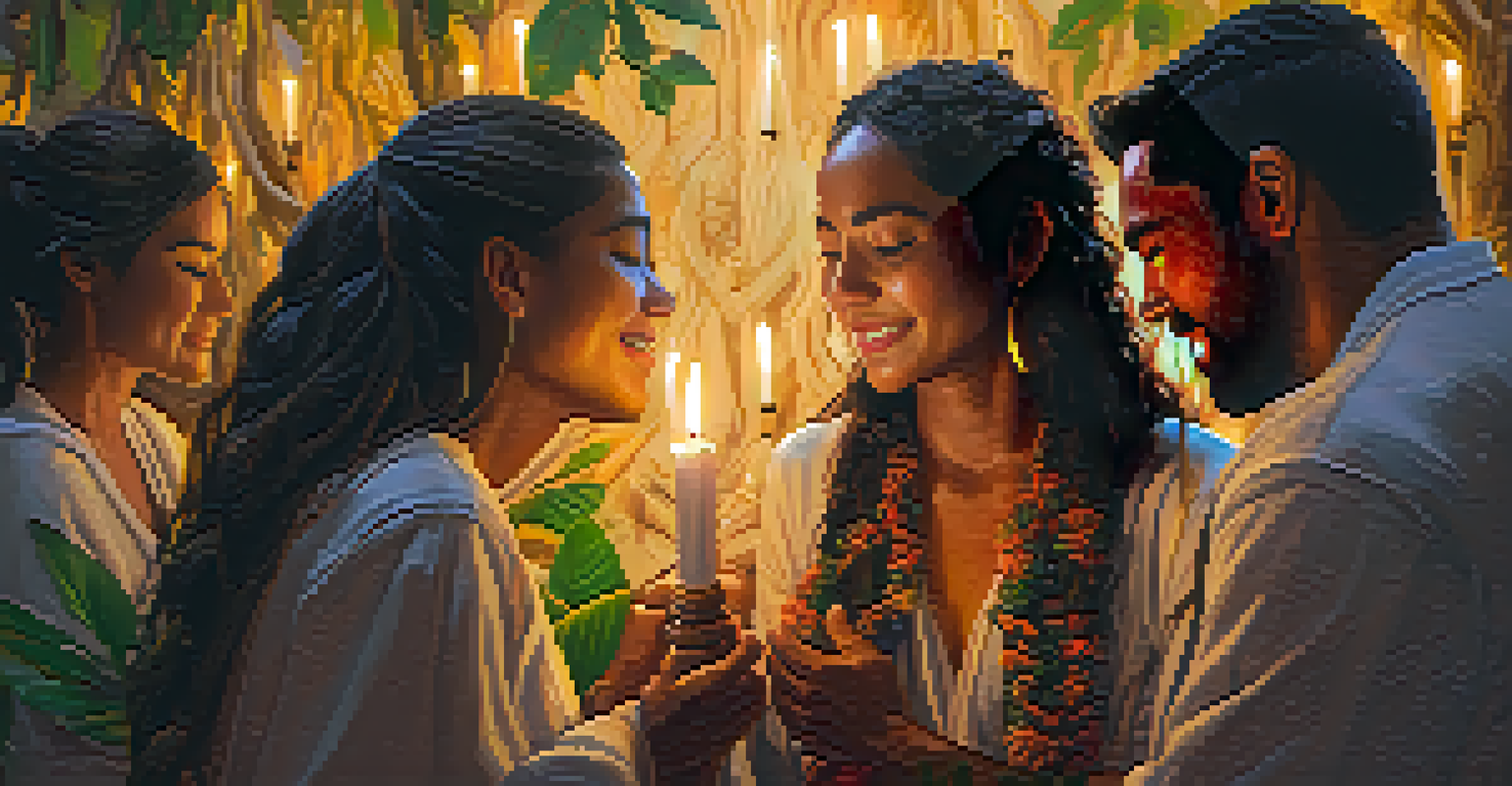Emotional Dynamics: Group Support in Ayahuasca Ceremonies

Understanding Ayahuasca and Its Ceremonial Context
Ayahuasca is a powerful brew originating from the Amazon, known for its psychoactive properties. Traditionally used by indigenous communities, it facilitates spiritual healing and deeper self-awareness. During ceremonies, participants often seek guidance, insight, or clarity, making the setting crucial for their emotional journey.
The greatest healing therapy is friendship and love.
The ceremonies are typically led by a shaman, who serves as a spiritual guide, helping participants navigate their experiences. This role is vital, as the shaman's presence can significantly influence the emotional dynamics within the group. By fostering a safe and supportive environment, they help individuals feel more at ease with the often intense emotions that arise.
In this context, group support becomes an essential element of the experience, as participants share a common goal of healing or self-discovery. The collective energy can amplify individual insights, making the journey not just personal but also communal. Understanding this dynamic is crucial to appreciating the full impact of ayahuasca ceremonies.
The Role of Group Dynamics in Emotional Healing
Group dynamics play a significant role in how individuals process emotions during ayahuasca ceremonies. Participants often find comfort in knowing others are on a similar path, which fosters a sense of belonging. This shared experience can help reduce feelings of isolation, allowing for more profound emotional exploration.

As participants witness each other's journeys, they often experience empathy and connection, which can help them confront their own emotions. This vicarious experience can serve as a catalyst for personal breakthroughs, enabling individuals to confront fears or traumas they might have avoided. In this way, the group acts as a mirror, reflecting back emotions and insights.
Group Dynamics Enhance Healing
The collective energy and shared experiences during ayahuasca ceremonies foster a supportive environment that amplifies individual emotional insights.
Moreover, the emotional support provided by the group can facilitate a sense of safety. When individuals feel secure, they are more likely to delve deeply into their emotions, leading to transformative experiences. The synergy created by the group ultimately enhances the healing potential of the ceremony.
Navigating Vulnerability in a Group Setting
Vulnerability is a key component of emotional healing, and group settings can amplify this aspect during ayahuasca ceremonies. Participants often share personal stories and struggles, creating an open environment where everyone feels encouraged to express themselves. This openness is crucial for building trust among group members.
We are all connected; to each other, to ourselves, to the universe, and to the earth.
However, being vulnerable in front of others can be daunting. People may fear judgment or ridicule, which can hinder their emotional journey. To combat this, many ceremonies establish ground rules that promote confidentiality and respect, ensuring that all participants feel safe sharing their experiences.
Once trust is established, vulnerability can lead to profound emotional insights. Participants may find that by sharing their struggles, they not only lighten their emotional load but also inspire others to open up. This interconnectedness is a powerful aspect of group support in ayahuasca ceremonies.
The Impact of Shared Intentions Among Participants
Shared intentions are a cornerstone of group support in ayahuasca ceremonies. When participants come together with a common purpose, it creates a powerful collective energy that can enhance individual experiences. This alignment of intentions acts as a guiding force throughout the ceremony, helping to focus emotional exploration.
For instance, if everyone is intent on healing past traumas, the group can collectively create a space where such emotions are welcomed and processed. This shared focus not only amplifies personal insights but also fosters a sense of unity among participants. It’s like a group of travelers setting out on a journey with a shared map; they support each other along the way.
Vulnerability Builds Trust
Creating an open space for sharing personal struggles encourages vulnerability, which is essential for deep emotional exploration and healing.
Moreover, shared intentions can help mitigate feelings of fear or anxiety that may arise during the ceremony. Participants often find comfort in the knowledge that others are experiencing similar emotions, which can normalize what might feel like overwhelming sensations. This collective approach to intention-setting is fundamental to the emotional dynamics at play.
The Shaman's Role in Facilitating Group Support
In ayahuasca ceremonies, the shaman is more than just a guide; they are a pivotal figure in fostering group support. Their ability to read the emotional climate of the group enables them to adjust the ceremony’s flow to meet participants' needs. This sensitivity often leads to a more profound emotional experience for everyone involved.
The shaman's rituals and practices often include singing icaros, or traditional songs, which can evoke deep emotional responses. These songs are designed to connect individuals to their inner selves and to the collective energy of the group. By skillfully weaving these elements into the ceremony, the shaman enhances the emotional dynamics at play.
Additionally, the shaman acts as a stabilizing force, guiding participants through challenging emotional landscapes. When someone is struggling, the shaman can provide reassurance and support, helping to ease tension within the group. This nurturing presence is essential in maintaining a safe environment for exploration.
Emotional Aftermath: Processing Insights Together
The emotional journey doesn’t end with the ayahuasca experience; it often continues long after the ceremony. Participants frequently engage in discussions afterward to process their insights, further solidifying the bonds formed during the ceremony. This communal processing can be an essential part of integrating the experience into their lives.
Sharing insights allows participants to reflect on their emotions and how they relate to one another. It can be enlightening to hear how different individuals interpreted the same experience, providing multiple perspectives on emotional challenges. This exchange can deepen understanding and acceptance of their own feelings.
Shaman Guides Emotional Journeys
The shaman plays a critical role in facilitating group support and navigating emotional dynamics, ensuring a safe and transformative experience for participants.
Moreover, these post-ceremony discussions can serve as a continuation of the support network established during the ceremony. Participants may choose to stay connected, forming a community that encourages ongoing growth and healing. This sense of continuity can be vital for emotional well-being as they navigate their journeys.
Conclusion: The Power of Emotional Dynamics in Healing
The emotional dynamics present in ayahuasca ceremonies highlight the importance of group support in the healing process. From shared intentions to vulnerability and empathy, these elements create a rich tapestry that enhances individual experiences. Each participant contributes to and benefits from this collective energy, amplifying the emotional journey.
As people return to their everyday lives, the insights gained during these ceremonies can lead to lasting change. The bonds formed with fellow participants often serve as a reminder of the power of community in healing. This shared experience can foster a sense of hope and resilience that extends beyond the ceremony.

Ultimately, ayahuasca ceremonies illustrate how interconnected we are in our emotional journeys. By embracing the support of a group, individuals can embark on a transformative path toward healing and self-discovery, making emotional dynamics a vital aspect of this ancient practice.